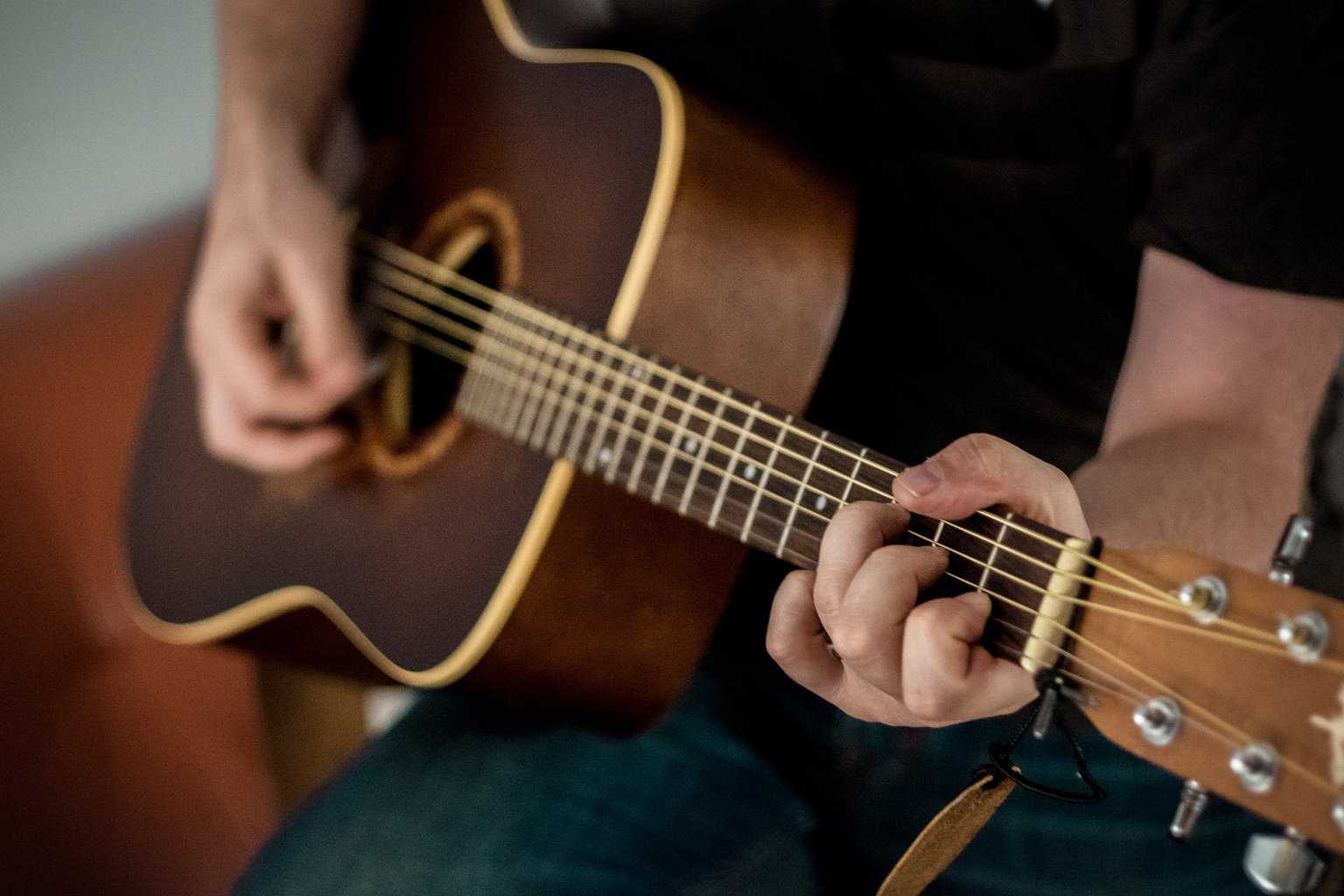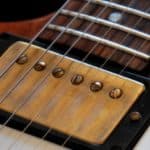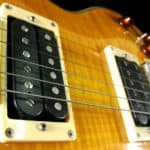If you ask a group of electric guitar players about the top 3 factors that define the tone of their guitars, it’s very likely that he would mention pickups in that list.
Hey, probably they will even have strong opinions on which kind of pickup they like the most.
But try the same thing with a group of acoustic guitarists, and many of them will not even think about how their sound gets amplified.
I know that’s not a fair comparison, an electric guitar depends on its pickups to make any usable sound.
That was just a way of motivating the topic of this article: What are the main types of electric guitar pickups and what is their effect on tone?
Here is a short answer:
There are 4 main types of pickups for acoustic guitars: Piezoelectric pickups are cheap, common, and have a bright sound. Contact ones sound more natural but are prone to feedback. Microphone paired ones are expensive but sound great. Magnetic ones are easy to install and have a better low end than piezos.
In this post, I will dive deep into this topic and mention the most common kinds of pickups for an acoustic guitar, and how they impact the final tone of the instrument.
Are you ready to get started?
Let’s go!
How do different types of pickups affect tone?
As with many other features that make up the tone of an instrument, and particularly a guitar, you should think about pickups as filters in what respects sound.
Consider the character of your guitar when played acoustically as the starting point. Any kind of pickup you use to amplify it will take away something from the frequency spectrum.
Perhaps you might feel like a particular kind of pickup boosts a part of this spectrum, however, the situation is probably that it’s subtracting from everywhere else.
You will find that different kinds of pickups “prefer” different frequencies (and I will go through each of the most common types further down), but this is not necessarily a bad thing.
You should think of it as just another variable that you could tweak, mix and match in the journey to your desired tone.
Nothing will ever be as good and natural as a studio microphone pointing at your instrument in a controlled environment, however, I believe that you can achieve great tones with the available options for live gigs or more informal recordings.
How much does pickup type affect tone?
Quantifying how much a single part of a complex system like an acoustic guitar affects the output of the whole apparatus is a very difficult task.
I can’t risk an exact answer for this.
However, based on my experience, and the consensus among many other players I talked about this topic, the impact is noticeable.
As I mentioned earlier, there is no perfect solution for transforming an instrument meant to sound acoustically exclusively into an electric signal.
There are many different approaches that achieve varying results in distinct ways, and my recommendation is that you try out as many as you can before arriving at a conclusion for your preference.
Most common acoustic guitar pickup types and their effect on tone
Here are some of the most popular pickup alternatives for “electrifying” acoustic guitars.
In no particular order:
Piezo pickups
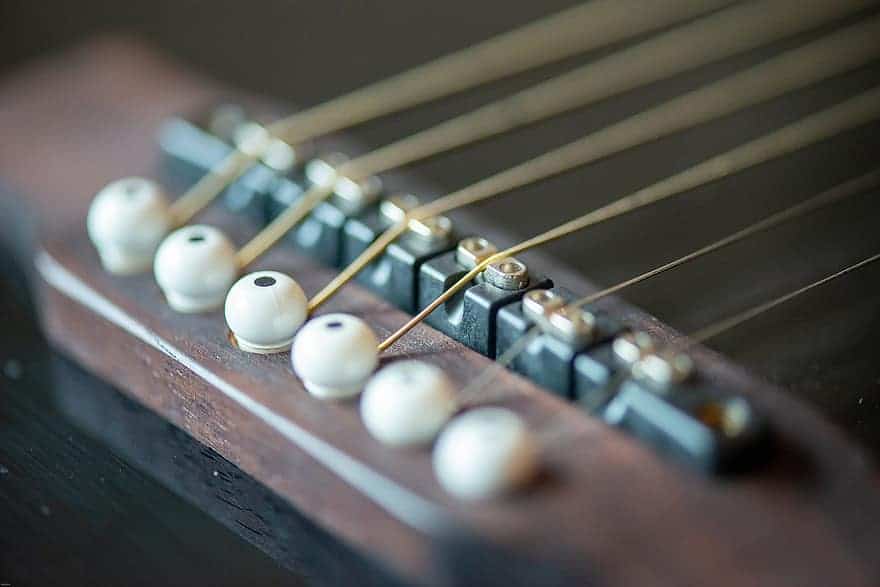
Piezo pickups are most likely the most popular alternative among acoustic guitar pickups.
These also can be found in modern electric guitars allowing them, with the flick of a switch, to achieve a passable acoustic sound.
But how does this witchery work? Well, with crystals, obviously.
These pickups are comprised of a line of six piezoelectric crystals that rest beneath the bridge, and that are sensitive to the vibrations of the strings.
Tone: The resulting tone for this system is percussive, bright, and what some might describe as lifeless. However, they are affordable, they come preinstalled in many instruments, and are less prone to feedback, making them very convenient as a simple solution.
Contact or vibrational pickups
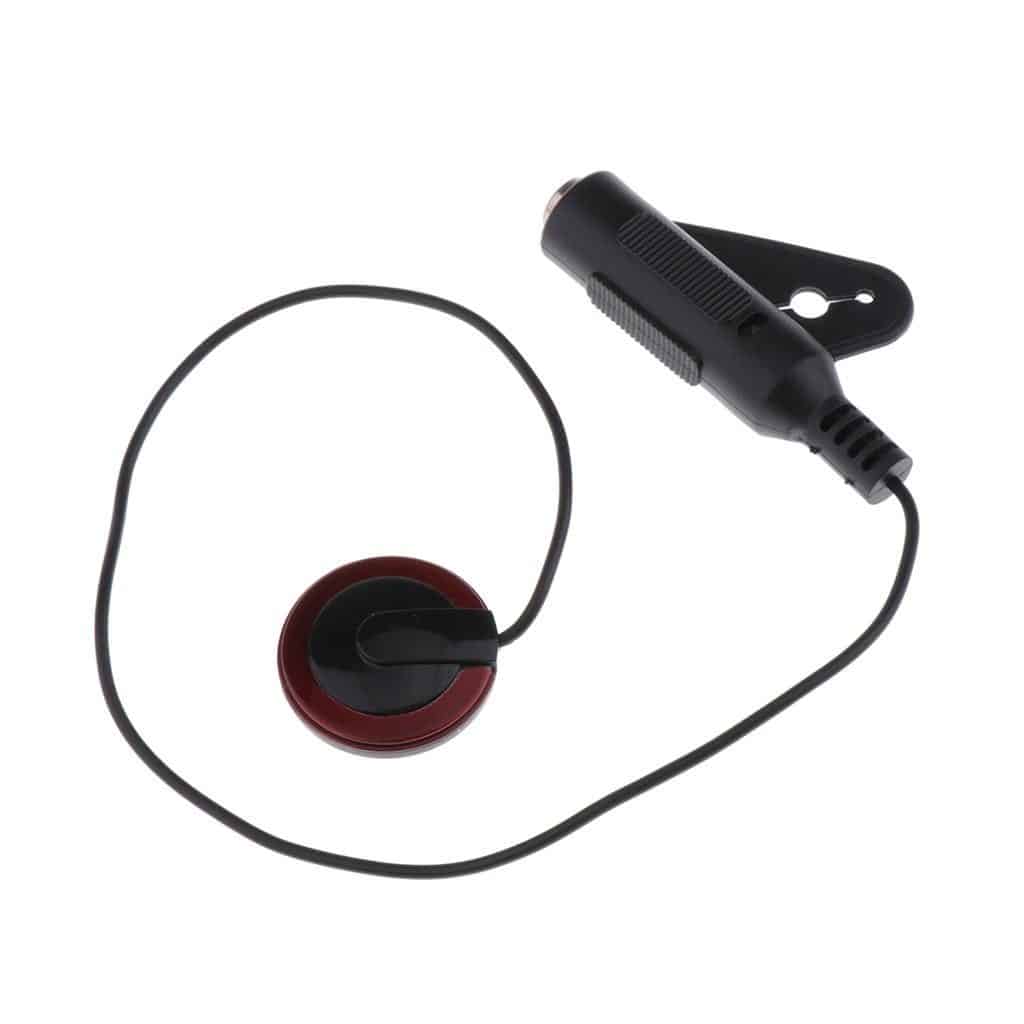
Contact pickups, as their name implies work by touching the top of the guitar, or in some cases the bridge.
Their particular position allows for the system to take both the vibrations from the strings and the instrument body.
The result of this approach is a step up from a piezo pickup, but with some drawbacks.
Tone: Being in contact with the top of the guitar allows for this alternative to sound fuller, and retain more bass. However, the same design that gets this warmer tone also makes these pickups very susceptible to feedback.
In many cases, even the tone achieved with this kind of system isn’t really usable as-is and requires EQ tweaks and post-processing.
Microphone paired pickups
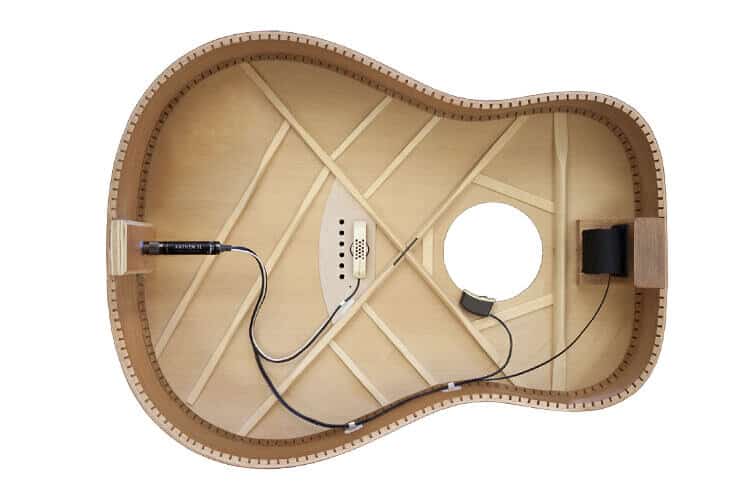
A big step up in quality and results comes from pairing an undersaddle contact pickup with an actual microphone.
This blended approach gets the best of both worlds, compensating the treble response of a piezo pickup with the warmth and naturalness of the real deal captured by the mic near the soundhole.
The big drawback for this set-up is probably its high price, and added complexity.
Tone: Very versatile and natural sounding, with the ability to mix between the undersaddle pickup and the microphone. This allows the player to turn down the latter in situations when feedback stalks.
Magnetic pickups
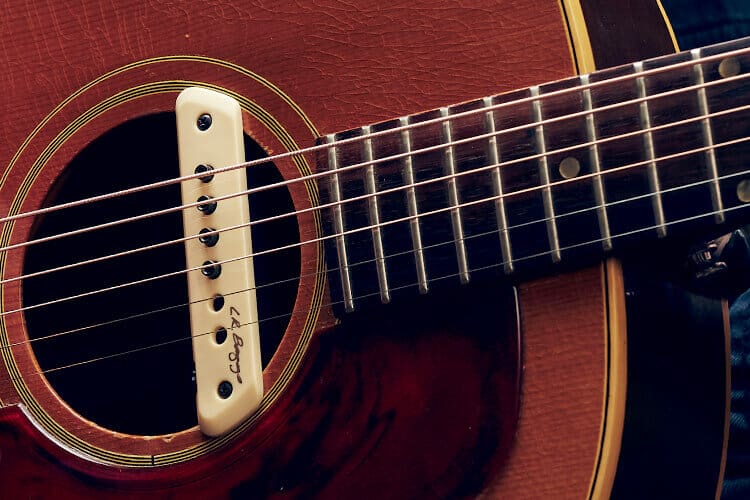
Magnetic pickups are one of the simplest alternatives from this list. You just install them in the soundhole and you are set.
They work by generating a magnetic field that senses the vibration of the strings and transforms it into an electric signal.
The same concept as electric guitars.
Tone: Magnetic pickups allow for a warmer tone than piezos, however, they lack some of the authentic tonal nuances you might get with microphone paired pickups. They are, on the other hand, affordable, easy to install, but somewhat inclined to generating feedback.
What type of pickup is better?
Objectively, probably the better choice, if budget is not an issue for amplifying an acoustic guitar is a set of microphone paired pickups. However, due to their convenient installation, and practicality, I tend to gravitate towards magnetic pickups. Also, I think they look cool.
But deciding ultimately which of these types of pickups would be better for you is a very personal matter and I encourage you to try out as many of them as possible before pulling the trigger on any of them.
Can you change or add pickups to an acoustic guitar?
Yes, you can add pickups to an acoustic guitar to make it electro-acoustic. The difficulty of this job will depend on the type of pickup you choose. Magnetic and contact types are easier to install, while piezo and microphone paired ones might require help from an expert and some routing in the instrument.
Conclusions and recommendations
My say in this matter is that you first think about how often you will need your acoustic guitar amplified.
Are you planning on taking it to band rehearsal or start gigging?
Now, taking this frequency into consideration, I would decide upon which kind of pickup would better suit your needs.
- If you want the best tone possible, go for a microphone paired pickup
- If you want no feedback troubles, and you are willing to sacrifice a bit of tone, get a set of piezoelectric pickups
- If you want an easy installation and a warmer tone, but you are willing to risk having some feedback, try out contact pickups
- If you want an easy installation, an acceptable tone, and susceptibility to feedback, install a magnetic pickup

Hello there, my name is Ramiro and I’ve been playing guitar for almost 20 years. I’m obsessed with everything gear-related and I thought it might be worth sharing it. From guitars, pedals, amps, and synths to studio gear and production tips, I hope you find what I post here useful, and I’ll try my best to keep it entertaining also.

